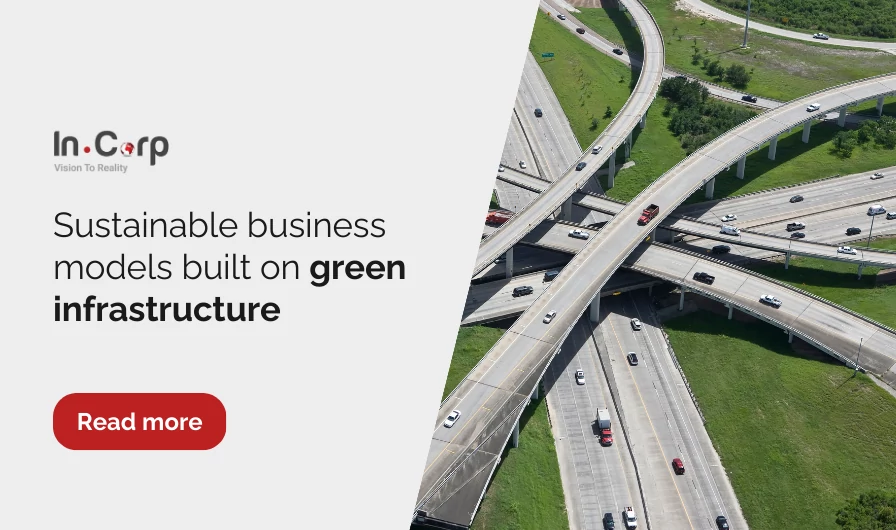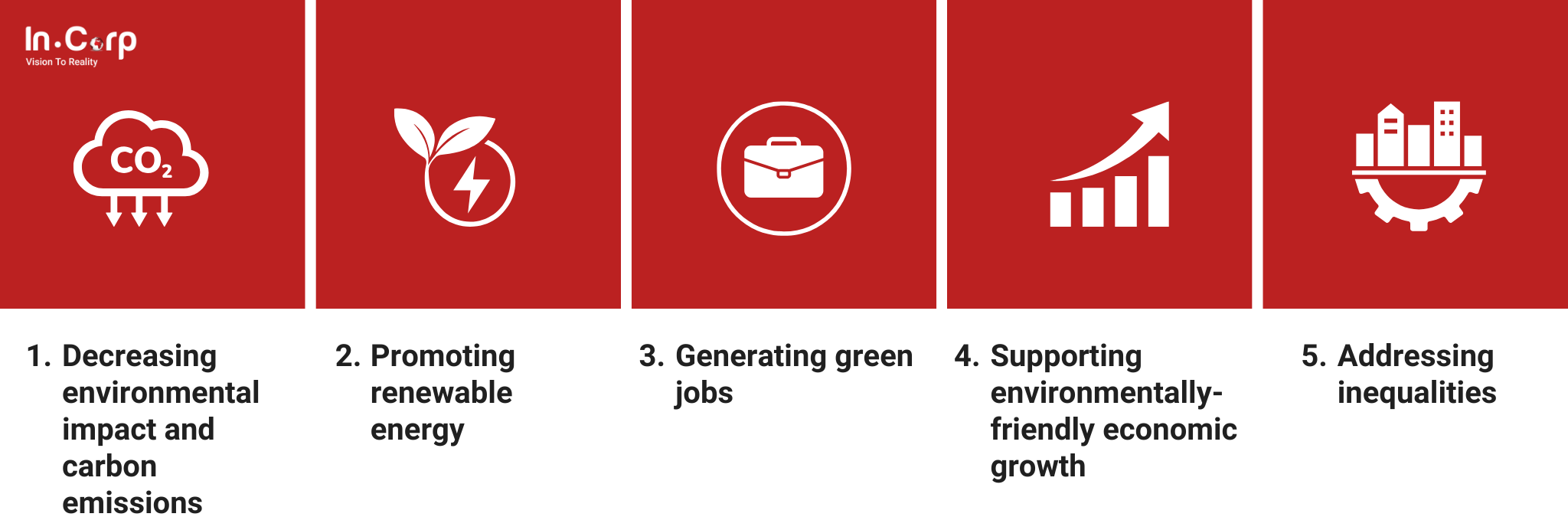Indonesia is facing dual challenges in optimizing sustainability goals. The country is dividing its focus between addressing infrastructure needs and mitigating the risk of climate change. Green infrastructure investment should take center stage here.
Green infrastructure investment offers a promising solution for businesses to prepare for the future. The investment model promotes economic development while protecting the environment and achieving sustainable goals. Let’s find out how green infrastructure investment works.
What is green infrastructure?
Green infrastructure means designing roads, bridges, power stations, and other essential systems to benefit the environment, economy, society, and institutions. With urban areas experiencing significant growth, particularly in emerging countries, infrastructure focusing on sustainability is proving to be more efficient, productive, and environmentally friendly.
According to the World Bank, sustainable facilities offer greater profitability by providing more reliable services, increased resilience to extreme weather events, and reducing the impact of natural threats on people and the economy.
According to the Inter-American Development Bank (IDB), there are four dimensions of infrastructure sustainability.
| Dimensions | Components |
| Economic sustainability |
|
| Social sustainability |
|
| Environmental sustainability |
|
| Institutional Sustainability |
|
The main purpose of green infrastructure
Sustainable infrastructure is crucial for emerging Asia’s development. It combats the effects of climate change, which has led to a global temperature rise of 0.6 degrees Celsius since 2023.
Neglecting sustainable green infrastructure can lead to severe environmental and social consequences. Today’s landscape shows traffic congestion, reduced green spaces, increased waste generation, and land subsidence, which will only get worse.
As a way of mitigating the risk, Asia countries need to invest USD 1.7 trillion annually in infrastructure for sustainable growth, including water, energy, transportation, and waste management.
Read more: Investing in Indonesia: Promising sectors in 2024
The rise of green infrastructure
Green infrastructure refers to the planning, design, and construction of infrastructure that minimizes environmental impact and provides environmental, social, and economic benefits.
1. Renewable energy projects
Solar, wind, and geothermal power generation can reduce reliance on fossil fuels and air pollution.
2. Sustainable transportation
Public transport systems, electric vehicles, and cycling infrastructure can reduce traffic congestion and emissions.
3. Green buildings
Energy-efficient buildings with water conservation features can minimize resource consumption.
4. Nature-based solutions
Mangrove restoration, green roofs, and urban forests can mitigate flooding, improve air quality, and provide habitat for wildlife.
The advantages of green and sustainable infrastructure
Green infrastructure has numerous positive impacts, including enhancing the environment and quality of life. Other areas that can gain from green infrastructure are discussed below.
1. Decreasing environmental impact and carbon emissions
Implementing more sustainable infrastructure could reduce the planet’s CO2 emissions by 3.7 gigatons annually over the next 15 years, as The New Climate Economy estimates.
2. Promoting renewable energy
Transitioning to a decentralized and digitized electric grid and decarbonizing the economy could provide access to electricity for the billion people currently without it.
3. Generating green jobs
The renewable energy sector could create 20 million green jobs by 2030, up from 2.3 million.
4. Supporting environmentally-friendly economic growth
Constructing sustainable infrastructure is crucial to transitioning to a new economy focused on climate and sustainability efforts.
5. Addressing inequalities
Current infrastructure inadequately meets the basic needs of emerging countries, such as access to water, sanitation, and transportation networks, while sustainable alternatives could provide solutions.
Challenges and opportunities
Despite the benefits, challenges remain in scaling up green infrastructure investment in Indonesia:
Challenges
A significant obstacle to decarbonizing infrastructure and reaching the SDGs is the lack of investment, better known as the ‘sustainable infrastructure investment gap.’ Approximately USD 2.6 trillion annually until 2030 is needed to meet the SDGs and achieve net-zero emissions by 2050.
Over three times the current investment in clean energy is required to close the gap, with 70% of the spending needed in emerging markets and developing economies (EMDEs).
Opportunities
Sustainable green infrastructure delivers lasting economic, social, and environmental benefits, helping to achieve global climate targets, the Sustainable Development Goals (SDGs), and a resilient global economy.
Investing in sustainable infrastructure is crucial amid the climate crisis, economic slowdown, and inequalities affecting vulnerable populations. It presents a significant opportunity for positive change.
- Infrastructure contributes to 79% of global greenhouse gas emissions.
- Clean energy investments could drive a 4% growth in global GDP by 2030.
- Infrastructure investment can help achieve 92% of SDG targets.
The Indonesian government’s commitment
Sri Mulyani, Indonesia’s Minister of Finance, noted that as an archipelagic nation, Indonesia will encounter obstacles in developing infrastructure to facilitate the movement of people, goods, and services throughout the country.
She also mentioned that Indonesia’s CO2 emissions are expected to increase alongside the growth in per capita income, reaching approximately 3 tons of CO2 emissions per capita.
Despite these challenges, the Minister affirmed that constructing sustainable infrastructure will remain a top priority for future governments in the medium and long term.
The future of green infrastructure in Indonesia
With continued government commitment, innovative financing mechanisms, and increased private sector participation, Indonesia has the potential to become a leader in sustainable green infrastructure investment.
This will contribute to achieving its economic development goals while protecting its environment for future generations.
Green infrastructure projects in Indonesia
- The Cirata Floating Solar Power Plant: Southeast Asia’s largest floating solar power plant, located on the Cirata Reservoir in West Java.
- The Jakarta MRT: A mass rapid transit system that reduces traffic congestion and air pollution in the capital city.
- The Green Surabaya Initiative is a city-wide program to promote green infrastructure, including parks, bicycle lanes, and green roofs.
Guide to Doing Business in Jakarta

Start investing in a greener future with InCorp
Sustainable green infrastructure presents numerous benefits, including job creation, addressing inequality, and reducing carbon emissions. The Indonesian government has shown strong support for promoting sustainable infrastructure.
If you’re interested in exploring this opportunity, InCorp Indonesia can be your partner in embarking on your sustainability journey. We offer ESG advisory and company registration services to streamline your business operations and ensure they meet sustainability requirements.
Click the button below and start your sustainability journey.




